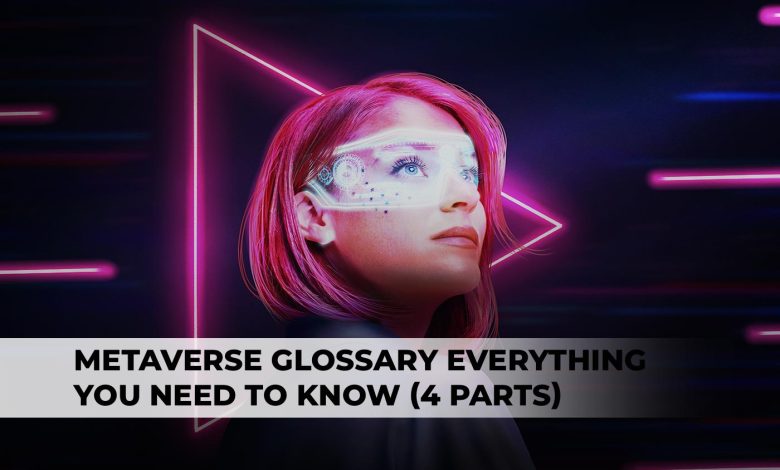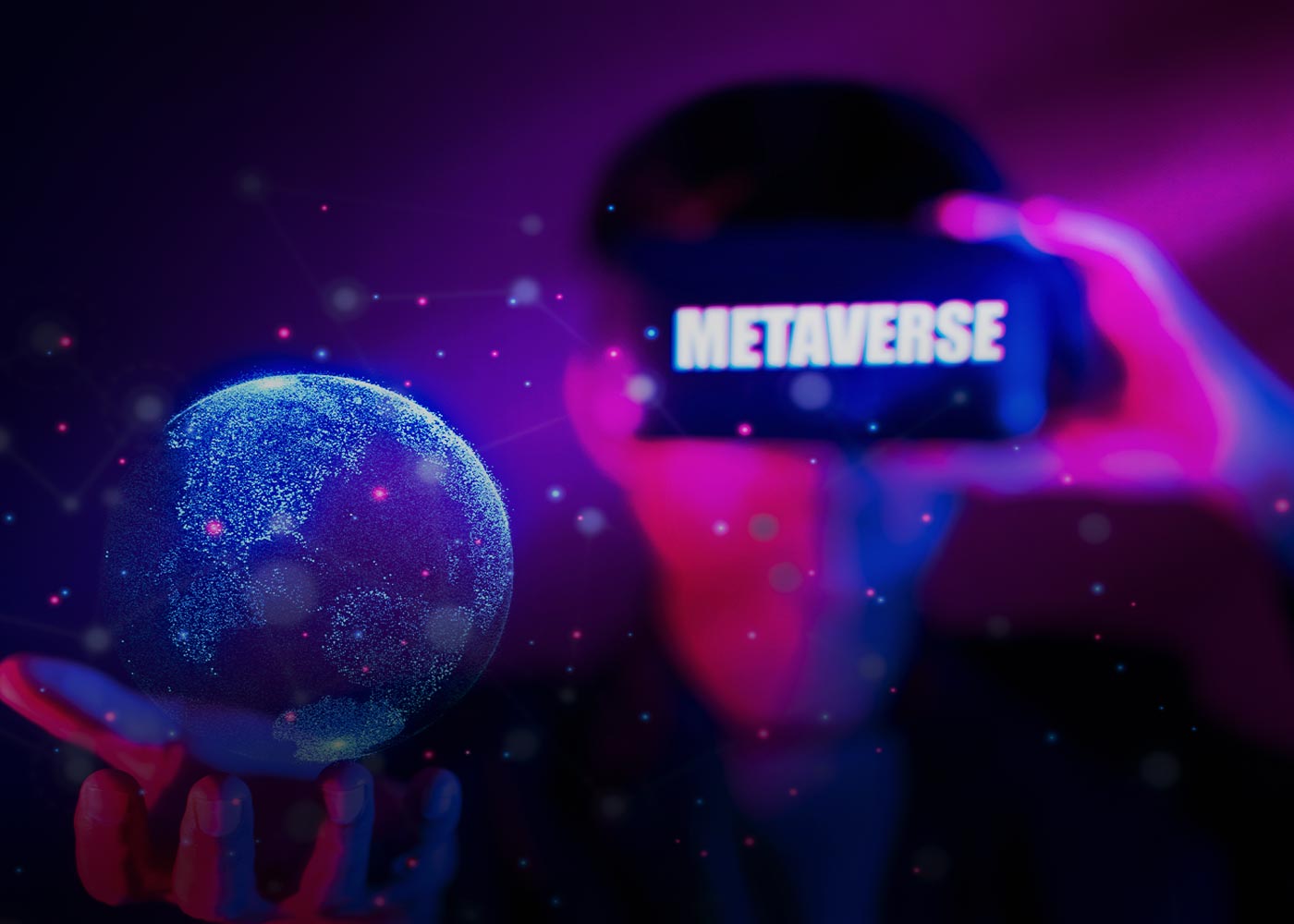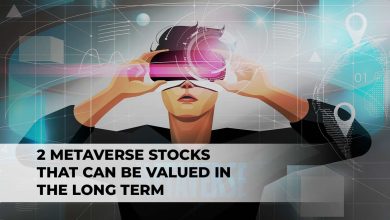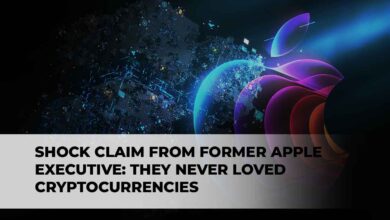
Have you heard of the virtual universe or Metaverse? Its increasing popularity has left many scratching their heads in confusion. Fortunately, tech titans such as Epic Games, Nvidia, Microsoft, Intel, and Facebook (Meta) are continuously discussing Web3 “recursion” – sparking an ever-evolving glossary related to it. To better understand what’s happening here, we’ve constructed this article with a thorough glossary of terms centered on the metaverse!
What Is Metaverse? Let Us Explain
The metaverse is a shared, digital world accessible to everyone globally. In this universe of virtual reality, users can partake in activities such as gaming, socializing, and learning while engaging with each other and many objects. It’s an immersive environment that allows for collaboration across vast distances!
The future of the metaverse remains uncertain – will it be a single virtual world or many disjointed environments? Yet, what’s certain is that this new immersive version of the internet made possible by AR and VR technologies will completely revolutionize how we connect with one another. Matthew Ball, an avant-garde investor who inspired Mark Zuckerberg to embrace the concept of metaverses, stated: “The metaverse shall become the successor to mobile internet – a platform for work, entertainment and everyday life on a grand scale.”
So What Are The Most Popular Metaverse Terms? Here’s Our Glossary:
Web 3.0:
Web 3.0 is an impressive blend of fresh technology that is revolutionizing the online experience. Voice recognition software, AI, and virtual reality are just some of the innovative tools which are enabling us to interact with each other and navigate through cyberspace more efficiently, accurately, and automatically than ever before, granting users unprecedented opportunities for connection, creation, and engagement in remarkable ways!
Web 3.0 is not just a fashion of the moment. Instead, it’s here to stay and create an improved internet landscape that is secure, private, decentralized, and without third-party intermediaries. It builds upon blockchain technology for its effectiveness in creating such benefits. In essence, Web 3.0 can potentially revolutionize our digital world as we know it!
Web 3.0 dares to dream of an internet entirely under our control, where data is shared securely and privately without the need for intermediaries. It entails decentralized networks on which users can interact directly with each other in a much more P2P environment than ever before!
Phygital:
The term “phygital” is derived from the combination of physical and digital, which describes the marketing process of an item that exists in both a real-life version and its virtual counterpart. Many companies have utilized this technique to give customers a tangible item and a digital iteration they can use within online worlds. We call it the creation of your very own “digital twin.”
Decentralized Autonomous Organization (DAO):
DAO, short for Decentralized Autonomous Organization, is a type of digital organization that runs through the blockchain with smart contracts. These protocols establish the regulations and governance within a DAO as well as how decisions are carried out. It’s no surprise then that many virtual projects feature DAOs to give users more say in where their project is going, making it an even more communal and worthwhile experience!
Mirror World:
Have you ever dreamt of exploring a world that is a reflection of our reality? Whether it’s in “Stranger Things” on Netflix, the Matrix movie series, or even the Ready Player One novel and movie – this concept has been around for quite some time. The metaverse is an example of such a mirror world, where digital equivalents of real people, places, and things can be found. However, these digital realms don’t always have to resemble existing physical locations; they could also be completely invented worlds like those often encountered in video games!
Skeuomorphic Design:
The term “skeuomorphism” is derived from two Greek words, “skeuos” and “morphe,” which translate to “ship” or “vehicle” and shape, respectively. Initially, this phrase alluded to the idea of creating virtual objects that resemble their physical counterparts (such as a 3D floppy disk icon in Microsoft Word). Despite our digital realm’s propensity for mimicking reality with its laws and designs, it doesn’t need to be an exact replication.
Digital Twin:
Despite being used by NASA since 1970, the term was coined by David Gelernter in the 1990s, and it is an exact duplicate of a tangible object or structure. Microsoft emphasizes that this technology will be vital for constructing the metaverse of the future.
Avatar:
Avatars are a way to make your mark in the digital world. They can be fashioned after yourself – or you could give them an entirely different look, like that of a beloved cartoon character or even skins from Fortnite! With avatars, the sky’s the limit!
Virtual Reality (VR):
Virtual Reality, otherwise known as VR, takes you to a completely digital world when wearing the headset. Rather than glasses, this technology immerses the user in an interactive 360-degree virtual environment with no boundaries – aside from physical walls, of course! With today’s headsets being so advanced and easy to use, anyone can enjoy this incredible experience.
Augmented Reality (AR):
Augmented Reality (AR) is an extremely exciting technology that overlays digital content into the real world. From Niantic’s Pokemon Go to Snapchat’s dancing hot dog, you can experience this innovative tech on various devices. Even though Google Glass never fully took off, Facebook and Snapchat are leading the way in revolutionary glasses-based AR experiences with Ray-Ban stories and “Spectacles,” respectively – soon enough, it could be as common as getting dressed before leaving your home!
Mixed Reality (MR):
The exact definition of mixed reality is somewhat elusive, but it essentially involves combining components from both the digital and physical worlds. Through this technology, people can interact with objects in various ways – for instance, using Snapchat to make a virtual hot dog dance around an actual table without tumbling off! Mixed Reality provides users with astounding chances to explore their environment on multiple levels.
Extended Reality (XR):
As an all-encompassing term, XR refers to the rapidly advancing world of virtual and augmented reality. With each new advancement in technology, the boundaries between VR, AR, and MR will become increasingly blurred as they merge together into one grand metaverse; a separate realm that requires its own descriptor – enter XR.
Neal Stephenson:
The legendary science fiction writer Neal Stephenson coined the term “metaverse” in his captivating novel Snow Crash. The metaverse is a vibrant and dynamic virtual world that Hiro Protagonist, navigates throughout the story – revealing an immersive experience for readers around the globe.

Massively Multiplayer Role-Playing Game (MMORPG):
Unlike traditional single-player games, these Massively Multiplayer Online Role-Playing Games (MMORPGs) provide users the chance to deeply customize their experience as well as expand their virtual capabilities by sharpening abilities that will bring them greater power within the game. Furthermore, through its integrated chat system, you’ll be able to make connections with other players who are just as passionate about this exciting world of gaming!
Millions of people come together in shared virtual worlds to play games, create projects, shop, and even attend concerts. From Fortnite and Roblox to Minecraft or the NFT-based Axie Infinity – these immersive experiences make it possible for users worldwide to connect with one another like never before!
Oculus:
In 2012, Oculus was born to revolutionize virtual reality (VR) experiences for users. Four years later, their ambitious mission caught Facebook’s eye, and they were acquired in 2014. With cutting-edge hardware and software products designed from the ground up by industry experts, Oculus is leading a new wave of immersive technology that will push boundaries beyond anything we’ve ever experienced before.
Oculus’ crown jewel is the Oculus Rift, a virtual reality headset that makes users feel like they are really in an artificial 3D world. This head-mounted display tracks their movements and allows them to virtually explore and traverse this environment as if it were real. So compelling is its realism that the VR experience can be enhanced with hand controllers, which enable natural interactions within this digital realm!
The Oculus Quest is another perfect way to experience mobile, casual virtual reality. No need for a PC or console – this standalone VR headset comes with its own set of controllers for an immersive and interactive environment wherever you go!
Second Life:
Second Life, a virtual world launched in 2003 that was one of the first social experiences to emerge on the Metaverse, has been highlighted for its unique design. Compared to other massively multiplayer online role-playing games (MMORPGs), Second Life is an open-world environment with customizable avatars and no designated gaming function. Predictions indicate that VR technology may soon become similar to this early version of Second Life—creating an even more immersive experience within the Metaverse.
Non-Fungible Tokens (NFT):
Non-fungible tokens (NFTs) are a revolutionary digital asset technology unlocking the capability for buying, selling, and trading one-of-a-kind items. These cryptographic tokens represent unique digital assets stored on blockchains with proof of ownership, allowing individuals to purchase art pieces, collectibles, and gaming products, among other verified tokenized forms. In short: NFTs have changed the way we trade digital items by providing reliable authentication methods backed up by distributed ledger technologies!
Creator Economy:
As a part of the metaverse, content creators are emerging as an integral power that offers users ever-changing experiences and products. For these creative minds, doors open to endless opportunities such as selling virtual clothing through NFTs, making soundtracks for others to listen to, or developing unique services and hosting events. Additionally, brands can join in on the action by teaming up with creative masterminds during advertisement campaigns. What’s more, is that this list doesn’t even scratch the surface of possibilities within this booming creator economy!
Play-to-Earn:
Play-to-earn (P2E) is a revolutionary concept in the gaming world that allows gamers to generate income from their gameplay. Players can earn virtual currencies by completing quests, winning battles and competitions, or renting out assets such as nonfungible tokens (NFTs). Moreover, many P2E games permit players to exchange their rewards for real money — making it an enriching hobby with tangible returns.
Play-to-earn (P2E) games provide a revolutionary model for the metaverse in which players are rewarded for their commitment and investment in the virtual environment, granting them genuine ownership over their in-game assets. This is one of the cornerstones that makes up what we today know as the metaverse. One eminent example of this type of game is Axie Infinity – where gamers can collect and nurture digital creatures while discovering all there is to explore within its world.
Mint:
“Minting” is the act of developing an NFT, which involves generating a singular certificate of authenticity for any asset. When minting, creators can lock in data that pertains to who owns it and how much was paid for it; after this information has been confirmed, it will then be added to a blockchain where people can buy, sell and trade with one another.
The Internet of Things (IoT):
The Internet of Things (IoT) is a web of physical gadgets, automobiles, home appliances, and other items that are enhanced with sensors, software applications, and connectivity, enabling them to interact and share data across the internet. As IoT continues to expand its reach through technology advancements, it has become increasingly important in developing the Metaverse – an immersive virtual reality setting where users can collaborate with each other as well as computer-generated objects in a communal space.
In the Metaverse, IoT devices have the potential to improve user experience by supplying real-time data and feedback. For example, wearable fitness trackers and biometric sensors could be used to monitor physical activity, heart rate, and other vital signs of the user. This information would then be integrated into the user’s virtual avatar, allowing for a more immersive and interactive experience in the Metaverse.
To take the Metaverse experience to a whole new level, IoT devices could be employed and connected with the virtual world. Think of it this way: You can control your virtual environment from the physical world by connecting your smart home gadgets to the Metaverse! This means that you will have access to modify things such as lighting, temperature, or other features in accordance with data collected from real-world sensors.





